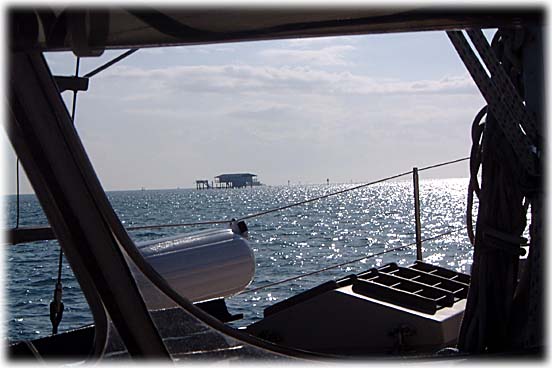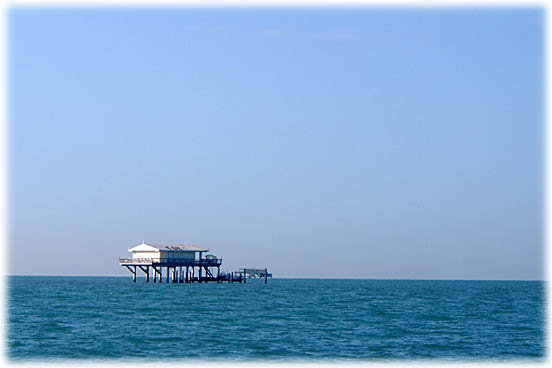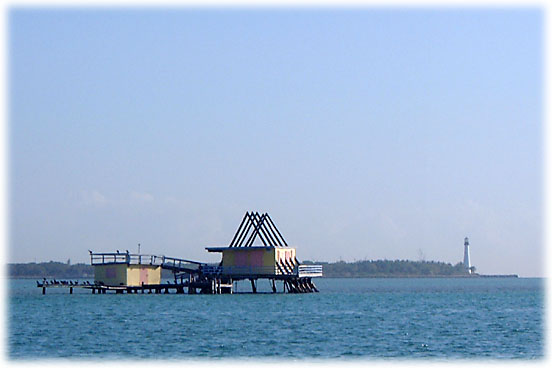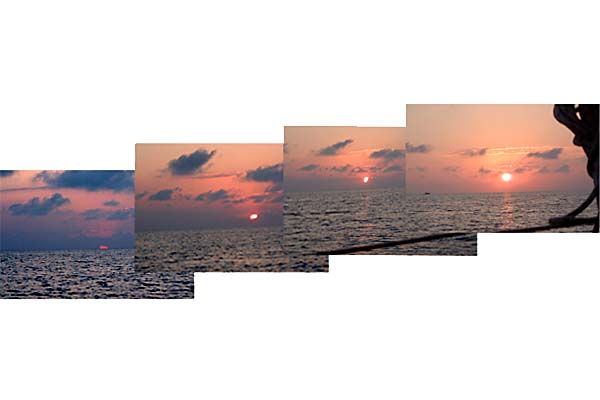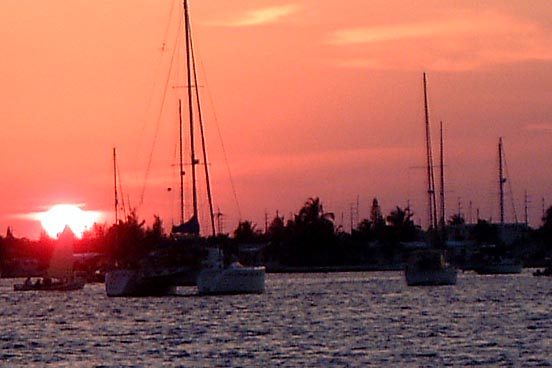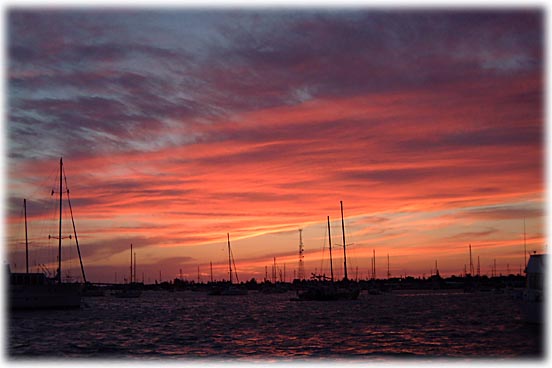SHIBUMI'S PASSAGE
TO MIAMI
FT. LAUDERDALE, FL After more than a month in the area, that included a week-long delay for ugly weather, Jill and I slipped the dock-lines at the Isle of Venice and departed Ft. Lauderdale bound for the Florida Keys.
Again, we felt the bitter-sweet emotion of moving on. Bitter, because we were leaving friends with whom we have so much in common. Sweet, because we were moving on toward what we were looking for, the laid-back life-style of the Keys. Oh, the dilema of a cruiser's life.
Miami was our first stop. Shibumi's mast is too tall to pass beneath the Julia Tuttle Bridge in the Miami area. That meant we could not go via the Intra-Coastal Waterway (ICW). So we headed out of the Port Everglades Inlet into the Atlantic Ocean for the 22 mile trip south to the Government Cut Inlet that is below the Tuttle bridge in Miami.
This was our first time in the Atlantic Ocean, any ocean, with just the two of us on board. Jill and I have traveled the Intra-Coastal Waterway, the equivelent of a river, quite extensively with just the two of us. But, all of our previous ocean experince had at least five people on board. We had to get use to not having three extra crew members.
We toyed with several sail combinations of our cutter-rig. We were running before the wind. I rigged a preventer line to protect us from an accidental gybe. A gybe, particularly an accidental one, can be quite destructive if the wind gets behind the main-sail and forcefully swings the boom from one extreme of the boat to the other. A preventer line ties the boom off and "prevents" a violent swing. We evidentually settled on motor-sailing with just the jib flying up front. That seemed to take some of the roll out of the following sea.
Two rain squalls made the ocean somewhat lumpy. Shibumi's cockpit grew wet and chilly with rain and an occassional wave over the deck. We wore our foul weather gear most of the trip because Shibumi's cockpit is open on three sides.
When we reached Miami we pulled into Government Cut Inlet then turned south of Dodge Island to enter Biscayne Bay. By that time we were feeling quite smug about our ocean experince, albeit only one day's sail.
We anchored off of Dinner Key, near Coconut Grove. That anchorage turned out to be a disappointment. There were several derelict boats and much debris floating around the anchorage. In fact, when we weighed anchor the following morning our anchor fished up a twenty-foot long rub-rail, apparently shed by some long neglected vessel.
All in all, our first time as a couple in the ocean was an exilarating experience. We slept well at anchor that night, feeling that we have accomplished something that we hadn't done before.

Jeff and Stan, from the sailboat Contessa, prepared ribs on the grill, near the pool at the Isle of Venice, the night before our departure.
